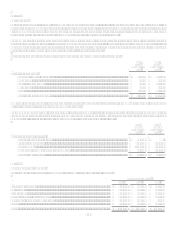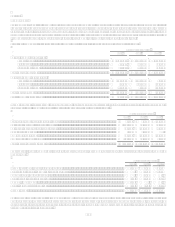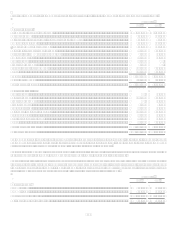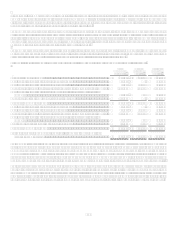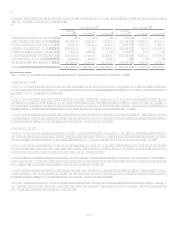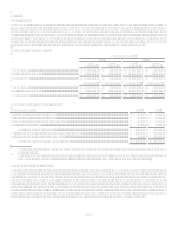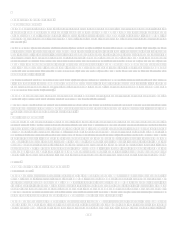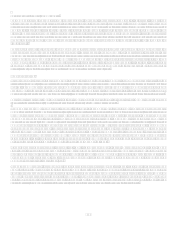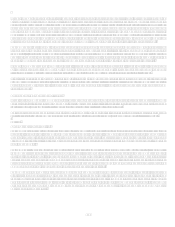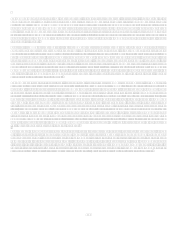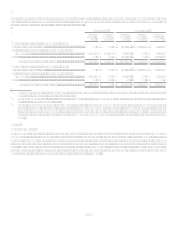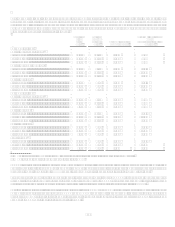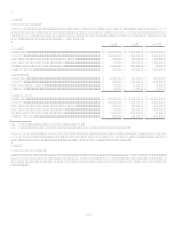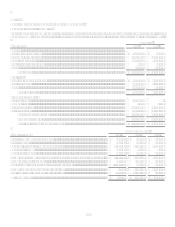Capital One 2008 Annual Report Download - page 159
Download and view the complete annual report
Please find page 159 of the 2008 Capital One annual report below. You can navigate through the pages in the report by either clicking on the pages listed below, or by using the keyword search tool below to find specific information within the annual report.
141
If these assumptions are not met, or if they change, the interest-only strip, retained interests and related servicing and securitizations
income would be affected. The following adverse changes to the key assumptions and estimates, presented in accordance with SFAS
140, are hypothetical and should be used with caution. As the figures indicate, any change in fair value based on a 10% or 20%
variation in assumptions cannot be extrapolated because the relationship of a change in assumption to the change in fair value may not
be linear. Also, the effect of a variation in a particular assumption on the fair value of the interest-only strip is calculated
independently from any change in another assumption. However, changes in one factor may result in changes in other factors, which
might magnify or counteract the sensitivities.
Key Assumptions and Sensitivities for Retained Interest Valuations
As of December 31
2008
2007
Interest-Only Strip
Retained Interests
Interest-Only
Strip
Retained Interests
Interest-only strip(1)/ retained interests............................
.
$ 122,949 $ 1,347,436
$ 408,013 $ 887,485
Weighted average life for receivables (months) ............
.
8 8
8 8
Principal repayment rate (weighted average rate)..........
.
16% 16%
15% 15%
Impact on fair value of 10% adverse change .................
.
$ (7,939) $ (28,014) $ (28,032) $ (1,758)
Impact on fair value of 20% adverse change .................
.
$ (12,917) $ (29,784) $ (53,231) $ (2,893)
Charge-off rate (weighted average rate) ........................
.
7% 7%
5% 5%
Impact on fair value of 10% adverse change .................
.
$ (77,577) $ (8,043) $ (74,193) $ (2,381)
Impact on fair value of 20% adverse change .................. $ (112,089 ) $ (16,086) $ (133,681) $ (4,771)
Discount rate (weighted average rate)............................. 18% 15%
13% 11%
Impact on fair value of 10% adverse change .................. $ (668 ) $ (15,829) $ (2,097) $ (8,777)
Impact on fair value of 20% adverse change .................. $ (1,327 ) $ (31,564) $ (4,170) $ (17,398)
(1) The interest-only strip includes servicing liabilities which do not fluctuate with changes to the valuation assumptions shown
above.
Static pool credit losses are calculated by summing the actual and projected future credit losses and dividing them by the original
balance of each pool of assets. Due to the short-term revolving nature of the loan receivables, the weighted average percentage of
static pool credit losses is not considered materially different from the assumed charge-off rates used to determine the fair value of the
retained interests.
The Company acts as a servicing agent and receives contractual servicing fees of between 0.50% and 4% of the investor principal
outstanding, based upon the type of assets serviced. The Company generally does not record material servicing assets or liabilities for
these rights since the contractual servicing fee approximates market rates.
Cash Flows Related to the Off Balance Sheet Securitizations
The Company receives proceeds from the trusts for off-balance sheet loans that are transferred and sold to external investors. The
sources of funds available to pay principal and interest on the asset-backed securities sold to investors include collections of both
principal receivables and finance charge and fee receivables, credit enhancements such as subordination, spread accounts or reserve
accounts and derivative agreements, including interest rate or currency swaps.
Collections of principal are generally retained by the Company as the investors elect to reinvest the collections in the purchase of new
principal loan receivables (revolving securitization). However, the Company is required to remit principal collections to the trust
when the securitization transaction is scheduled to mature or earlier if an amortizing event has occurred. Securitization transactions
may amortize earlier than scheduled due to certain early amortization triggers, which could require the Company to fund spread
accounts, reduce the value of its retained residual interests and ultimately require the off-balance sheet loans to be recorded on the
Companys balance sheet and accelerate the need for alternative funding. Additionally, early amortization of securitization structures
would require the Company to record higher reserves for loan losses and would also have a significant impact on the ability of the
Company to meet regulatory capital adequacy requirements. No early amortization events related to the Companys off-balance sheet
securitizations have occurred for the years ended December 31, 2008 and 2007.



